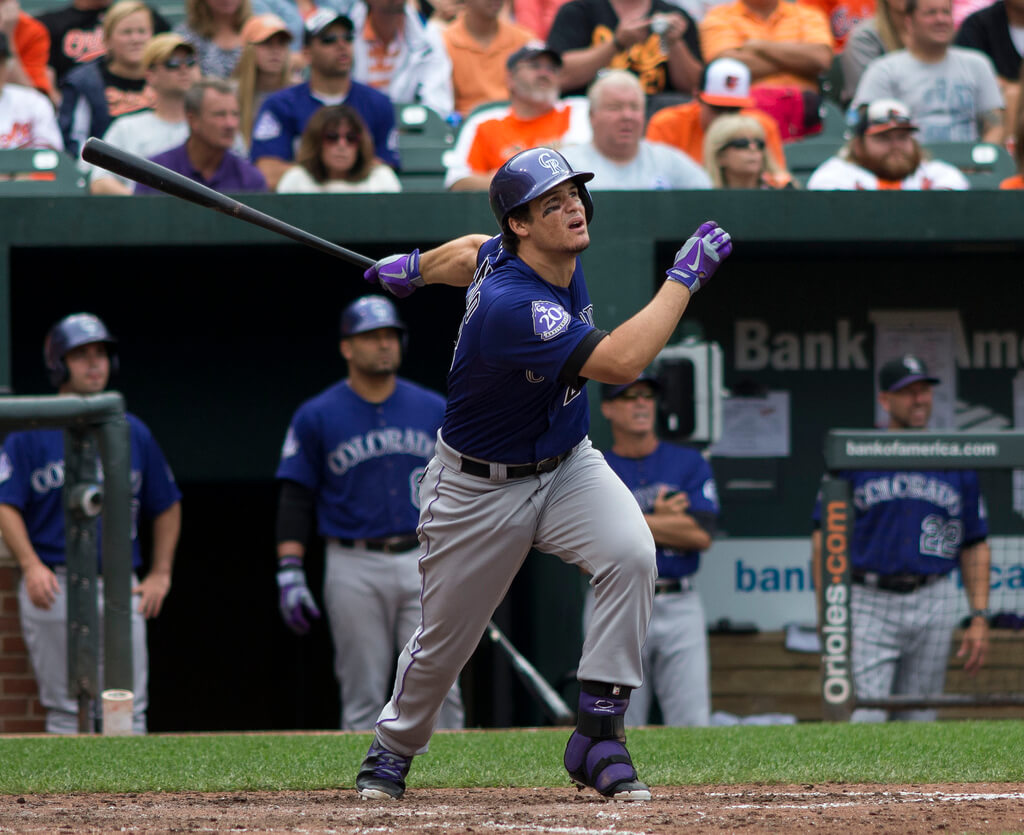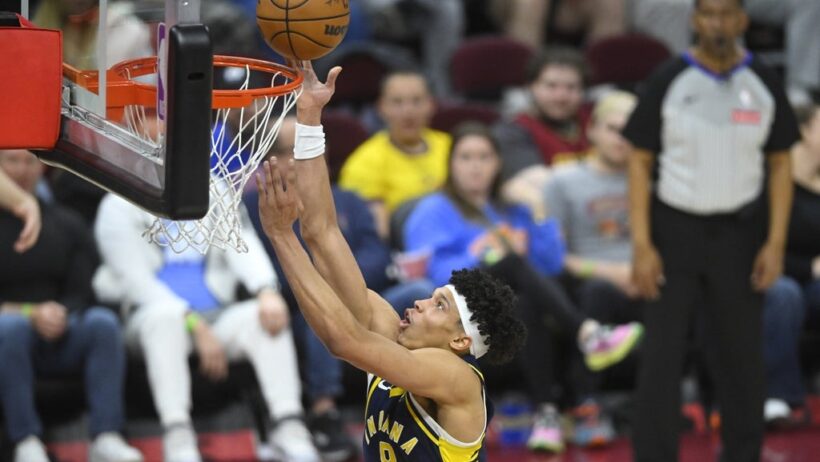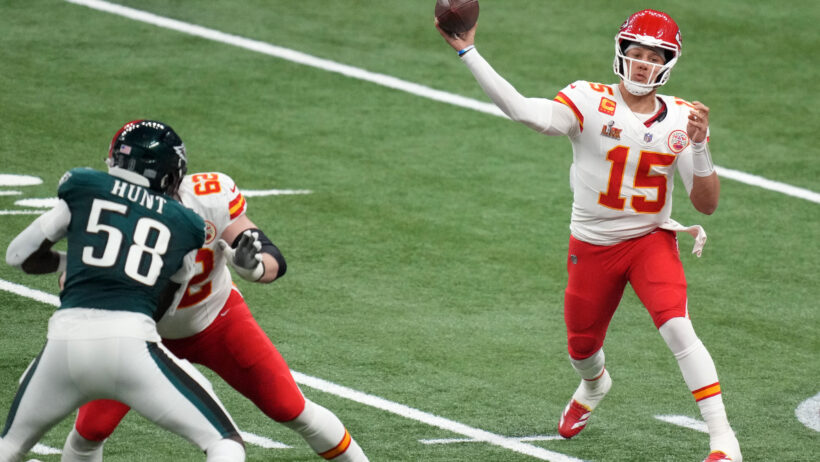Grand Salami Unders Look Like Good Value; But the Overs Have Been Cashing In as Scoring Soars
By Sascha Paruk in MLB Baseball
Updated: March 31, 2020 at 2:18 pm EDTPublished:

- The MLB Grand Salami totals seem to be getting higher and higher
- Does that mean there’s increased value betting the under?
- No. No it doesn’t
Depending on which sportsbook you use, you may have come across the Grand Salami prop in the baseball section. This article explains the concept Grand Salami betting in detail. Briefly, the “Grand Salami” total allows bettors to wager over/under on the number of runs that will be scored in all the MLB games that day, combined.
Here’s how it looked at one prominent sportsbook on Friday, Jul. 5th.
Grand Salami Total Runs Odds
| Total Runs | Grand Salami Odds (Jul. 5) |
|---|---|
| Over 129.5 | -103 |
| Under 129.5 | -117 |
*Note that all games have to go nine innings for Grand Salami bets to be graded either way. A single rain-out, postponement, or shortened game render these bets “no action” (meaning all bettors get their money back).
The Grand Salami Total Is Usually Higher Than the Combined Totals from the Individual Games
Friday’s slate consisted of 13 games and discerning bettors will have noticed one curious inconsistency. Adding up the totals from each of the 13 games results in just 124.0 runs, meaning the average O/U of Friday’s games is just 9.54 runs.
Yet, the Grand Salami total effectively sets the average over/under at 10.0. Unless the 13 games average at least 10 runs per game, the under is going to cash.
This has become the norm with Grand Salami totals. Most days, unless it’s a particularly light schedule, you can expect the Grand Salami total to be 4-5 runs higher than the cumulative total of the individual games.
Does that Mean the Under Always Has Better Value?
At first glance, that discrepancy suggests there’s value in betting the under, right? It’s not that simple.
While it is common for overs — in all sports — to be set a little higher than they ought to (because the public generally likes betting on action versus inaction), scoring is up in baseball this season.
MLB Runs-Per-Game by Year
| Year | Average Runs Per Game (via Baseball Reference) |
|---|---|
| 2019 | 9.61 |
| 2018 | 8.90 |
| 2017 | 9.29 |
| 2016 | 8.96 |
| 2015 | 8.50 |
| 2014 | 8.13 |
| 2013 | 8.33 |
| 2012 | 8.65 |
| 2011 | 8.57 |
| 2010 | 8.77 |
But wait, why don’t sportsbooks inflate the totals for individual games? Good question. The answer is that they do. Scour the board on any given night and you’re a lot more likely to see a 9.5 O/U than an 8.5 O/U this season. That’s a marked difference from years prior.
So then shouldn’t there still be value on the Grand Salami under if the individual totals have been increased commensurately with the increase in MLB scoring?
Here’s where it gets theoretical.
There’s No Upper Limit to the Number of Runs in a Game
An MLB game can only stay a limited number of runs under the total. A game with a total of 9.0 can only, at maximum, stay eight runs under the total. And, as you might have guessed, 1-0 games are extremely uncommon. As long as both teams score at least one run — which is happening at a rate of 97% — then every game will have at least three runs.
However, there is no upper limit to the number of runs that can be scored in a game. The highest scoring game this year was was the Yankees/Red Sox abomination in London, which ended 17-13. The O/U on that game was 11.5. So it went 18.5 runs over the total.
The highest scoring game this year was was the Yankees/Red Sox abomination in London, which ended 17-13 [and] went 18.5 runs over the total.
Rockies games at Coors Field are seeing runs scored at a pre-humidor rate (1.626 runs per inning).
So far, 22/43 games at Coors Field have featured at least 14 runs. Eight games have featured at least 19 runs.
As the Weather Warms Up, Scoring Increases
A 9.61 RPG average, as outlined above, still doesn’t get to the 10.0 RPG average that’s common for the Grand Salami. But as the weather warms up, scoring is going to keep going up, history tells us.
Data from the last couple weeks, in addition to the last several years, supports this.
| Date | Number of Games | Runs (Per Game) |
|---|---|---|
| July 4th | 12 | 131 (10.9 RPG) |
| July 3rd | 16 | 139 (8.7 RPG) |
| July 2nd | 14 | 143 (10.2 RPG) |
| July 1st | 5 | 76 (15.2 RPG) |
| June 30th | 15 | 161 (10.7 RPG) |
| June 29th | 15 | 165 (11.0 RPG) |
| June 28th | 14 | 117 (8.4 RPG) |
| June 27th | 10 | 102 (10.2 RPG) |
| June 26th | 15 | 146 (9.7 RPG) |
| June 25th | 15 | 130 (8.7 RPG) |
| June 24th | 7 | 80 (11.4 RPG) |
| June 23rd | 15 | 157 (10.5 RPG) |
| June 22nd | 15 | 154 (10.3 RPG) |
| June 21st | 15 | 149 (9.9 RPG) |
| June 20th | 12 | 125 (10.4 RPG) |
| June 19th | 16 | 166 (10.4 RPG) |
Over the last 16 days, the average RPG for the day has been over 10.0 on 11 occasions. Small sample size, but worth noting.
There are still plenty of low-scoring games most nights, but the number of games that are going five or six (or ten) runs over their individual totals are simply outpacing the number of games staying under by similar margins.
What to Look for When Betting the Grand Salami
I never wager too much on the Grand Salami because it’s very difficult and time-consuming to analyze 12-15 games properly. But I do like sprinkling a little on it from time to time because it provides an entire night’s worth of entertainment. You literally have a stake in every single at-bat of the day.
Before wagering, I always consult the weather forecast for the day, for two main reasons.
- If it looks like a rain-out is likely, I won’t bother, because the bet will be voided anyway.
- The prevailing winds will give you an idea of how many games have 20-run potential, and how many are likely to be pitcher’s duels.
But don’t just look at wind direction, look at wind speed. A 3 MPH wind in from center isn’t going to knock a lot of balls down. A 12 MPH wind, however, is going to keep some balls in the park.

Managing Editor
Sascha has been working in the sports-betting industry since 2014, and quickly paired his strong writing skills with a burgeoning knowledge of probability and statistics. He holds an undergraduate degree in linguistics and a Juris Doctor from the University of British Columbia.



